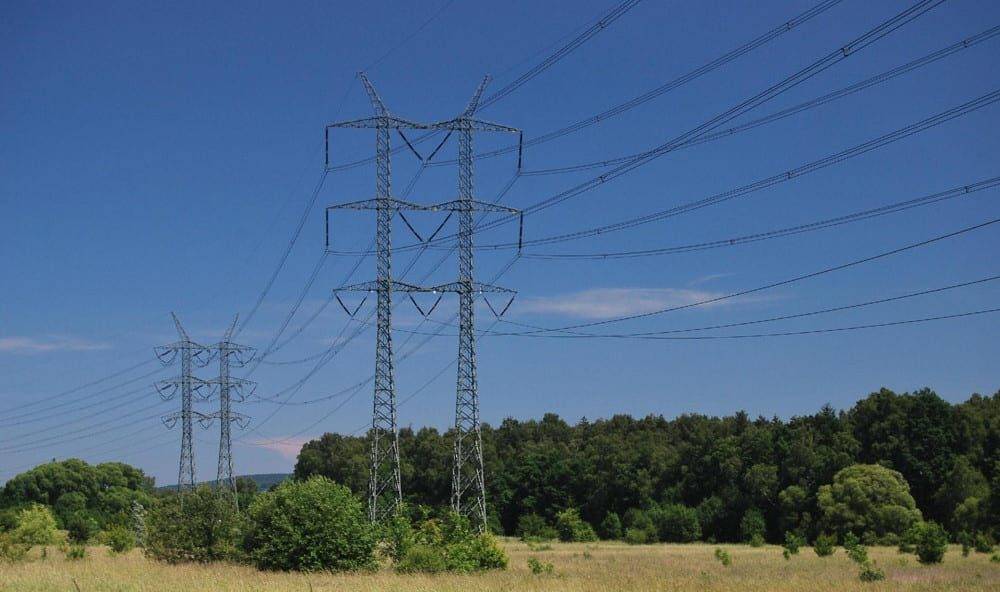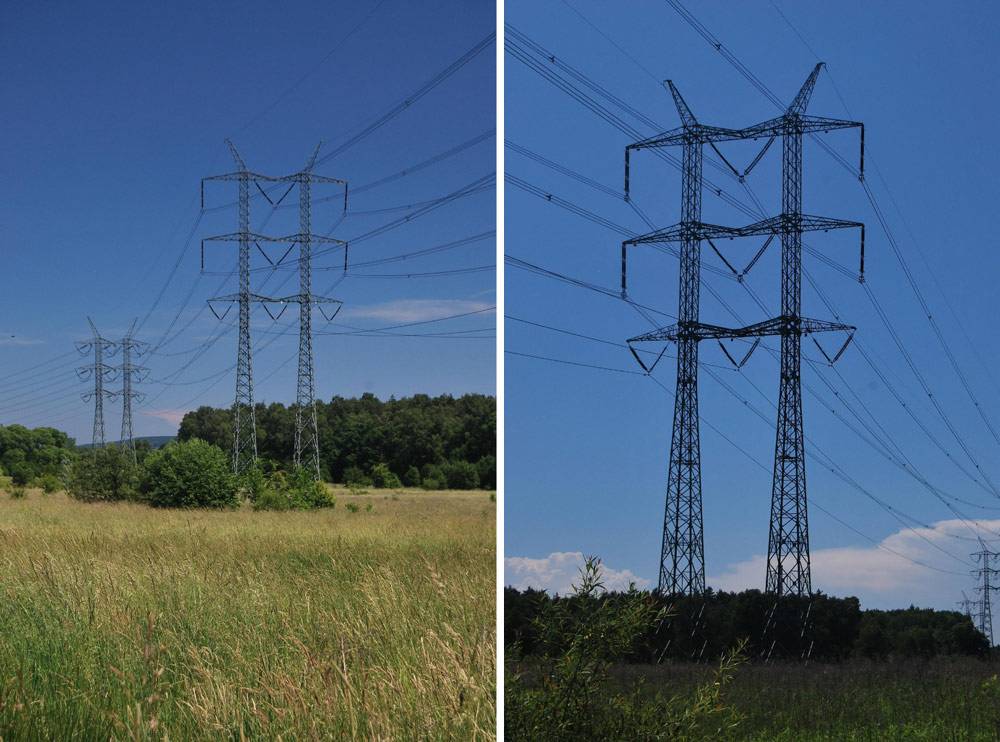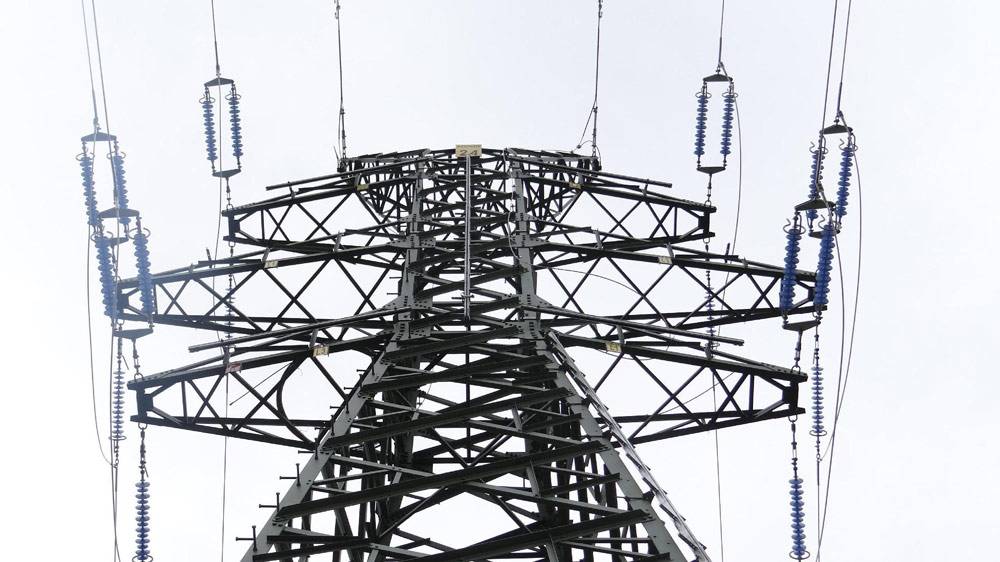Types of Supporting Structures for Power Lines
 Support structures for power lines
Support structures for power lines
The basic components of power lines are towers (pylons, poles), conductors and insulation. Towers are constructed so as to enable the routing of service conductors by which electricity is transmitted, with adequate insulation distances from objects in the vicinity of the lines and from the tower structures themselves. The dimensions and type of transmission towers depend on many factors, including the rated voltage of the power line, the location of the structure and the role it is to play in the line. All types of transmission towers are manufactured according to standards that guarantee safety of use and durability.
Size of transmission towers for high voltage lines 110 kV and above
The different types of transmission towers are designed according to the voltage at which the line operates. The higher the voltage, the greater the distances to be maintained between the wires in the power line and the ground and the tower structures themselves. This results in higher voltage line towers being taller and wider than the ones for lower voltages.
multi-circuit towers – all structures that can accommodate more than two circuits.
single-circuit towers – on which are hung three phase wires making up one AC circuit and one or two lightning wires,
double-circuit towers – on which six phase conductors (two circuits) and one or two lightning wires are suspended,

This may be of interest to you: Advantages of power transmission in HVDC system. Are there also any disadvantages?
Transmission towers – types of support structures
Transmission towers are also differentiated according to the role they are to play in the line. Several criteria are considered here, the most general of which includes two types of support structure – suspension (pass-through) and section support.
- Suspension (pass-through) structures – as defined in the currently applicable standard (PN-EN 50341-1:2013-03 “Alternating current overhead power lines above 1 kV. Part 1: General requirements. Common specifications”) are structures fitted with suspension insulator strings. However, this definition does not explain much. The one contained in the withdrawn Polish Norm(PN-E-05100-1:1998 “Overhead power lines. Design and construction. Alternating current lines with bare conductors”), which states that these are poles designed to support conductors without taking up their tension.
The basic type of such structures are suspension towers. They are usually used on straight sections of overhead lines where the route does not change its course by more than 2 degrees. In this location, the suspension towers are used to support the cables and therefore mainly carry vertical loads, but not the higher forces caused by cable tension. The use of suspension structures at the positions where the line changes direction results in loads in them with the resultant force from the tension of the cables in the direction of the bisector of the break angle. Such loads can be significant and increase strongly as the angle increases. Such a positioning of the structure requires its appropriate design and it is then customarily referred to as an angle tower.
The loads on suspension towers are strongly related to the length of the span (distance between poles in a straight line) that the tower separates, which is why different types of suspension towers are designed for structural optimisation, depending on the span length (each type assumes a maximum length of span between which the tower can be set).
- Dead-end (section) support structures – PN-EN 50341-1:2013-03 standard gives an enigmatic definition of these, talking about structures equipped with tension insulator strings. The PN-E-05100-1:1998, however, explains their function in the line as structures intended to take up the tension of the conductors. The basic types of these structures are sturdy towers. These towers are used on the straight route (to limit the length of the line section) or at the bend of the line (to absorb the resultant force from the tension of the wires). The shape and design of the dead-end (section) tower depends on the line bend angle. An acceptable range of bend angles is specified for a given tower type.
In practice, many types of suspension and dead-end (section) structures are used on a given line to form what is known as a series of towers. The basic types of transmission towers used on the line are the suspension and dead-end towers mentioned above. In addition to these, there are other, less common, types of towers.
- Long-span towers – found in the case of very long spans, mainly at crossings with large rivers, where it is necessary to design very high structures (the height of a transmission tower for a 400 kV line often reaches over 100 m).
- Termination towers – suitable for carrying loads when cables are suspended from one side only. They are mostly used at the ends of lines before substations, and the wires are brought down from them to the substation structure.
- Switch towers – are a sub-type of termination tower, except that in their case there is a transition from an overhead line to an underground cable line. Fittings are mounted on the towers to connect the overhead wires to the cables. These towers are used when there is a need to run cable to a substation or when a section of line needs to be buried, for example when land is freed up for development.
- Branch towers – a fairly rare type, used at branch points of circuits. Depending on their function, they combine features of different types of transmission towers.

Location of overhead lines
The design of the transmission towers is largely determined by the location of the projected line. Depending on its location, the climatic loads to be taken into account are determined on the basis of the relevant standards. These loads determine not only the required strength of the transmission towers, but also their sizes. It is necessary to take into account the behaviour of the wires under wind and/or ice loads.
The type of the terrain across which the line runs is also important. Where lines run through woodland, additional types of structure are usually designed to reduce the necessary felling. In terms of operating conditions, they are mostly equivalent to the basic towers, but have a different geometry – the aim of these towers is to either reduce the width of the line (so-called forest poles) or to run the wires over the forest (so-called over-forest poles). Similarly, for 110 kV lines, so-called slim towers are often used in urban areas. They are also equivalent to basic towers, but their footprint is significantly smaller. At the cost of greater construction weight, this reduces the area occupied.

Standards and norms to be met by transmission towers
The transmission towers shall be designed in accordance with the PN-EN 50341-1:2013-03 standard with the PN-EN 50341-2-22:2016-04 appendix. Polskie Sieci Energetyczne and distributors have also developed their own technical specifications setting out additional requirements. In addition, account must be taken of the specific factors at the site which are often significant for the structures to be designed. In practice, whereas in the case of 400 kV lines it is not uncommon for structures to be individually designed for a specific site, for 110 kV lines catalogue towers are usually used. They are developed to be used on lines designed for standard parameters. Eltel Networks Engineering SA has also developed such structures, has them in its offer and uses them on its projects. These tower designs are also available for sale.
Are you looking for an electricity design and construction solutions provider with international experience? Check out our offer at alterga.coml.
Author: Dominik Brudniak